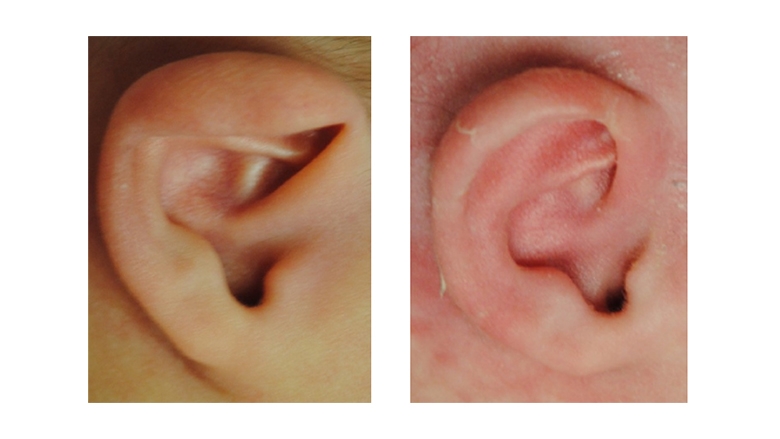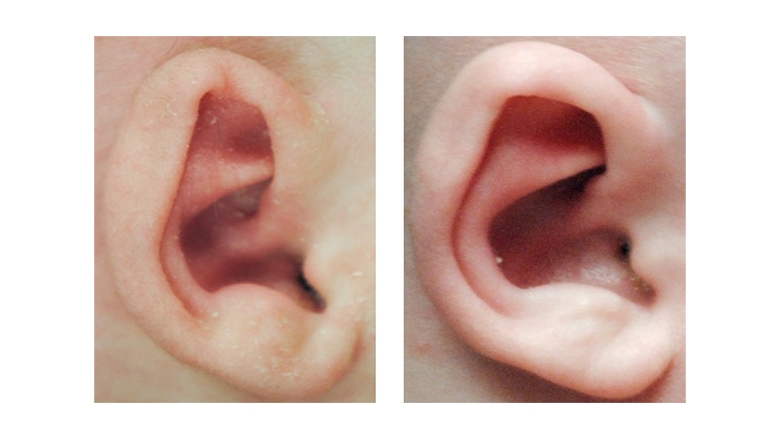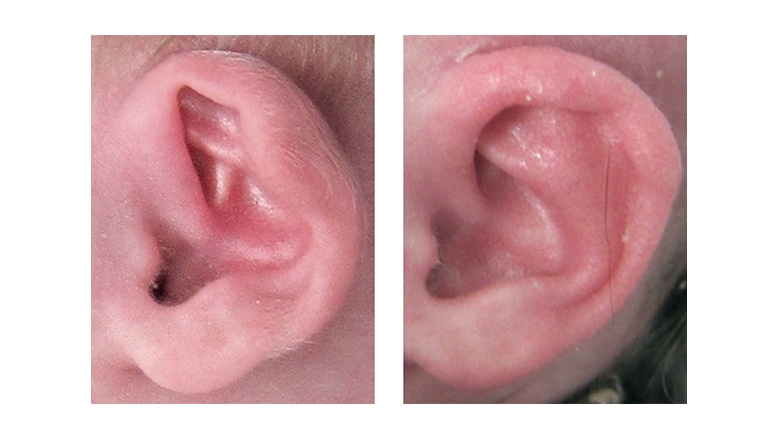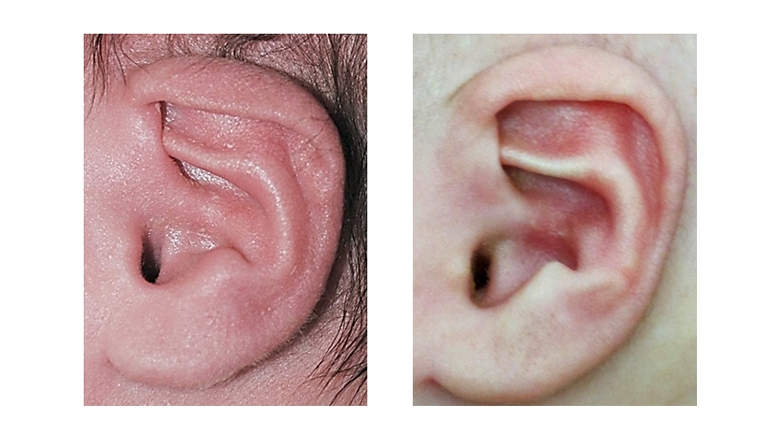Constricted/Lop/Cup Ears
What are constricted/lop/cup ears
Examples of constricted/lop/cup ear deformity. Constricted/lop/cup ears refer to a variety of ear deformities where the top rim of the ear (helical rim) is either folded over, wrinkled, or tight. This condition can range from mild to severe. In the mild form, the rim of the upper ear (helix) alone may be folded — this form is sometimes called lop ear. In the severe form, the cartilage of the helix and scapha (the curved depression below the rim of the upper ear) may be constricted, forming a tight roll.
Causes
It is unknown what causes constricted ears. There may be a shortage of skin or cartilage, or both.
Treatment
Nonsurgical ear molding
Newborns with constricted/lop/cup ear deformities may respond to non-operative molding while their ear cartilage is still soft. Ear molding uses a combination of a commercially available ear molding systems and orthodontic molding materials to reshape the ear.
If ear molding is started early enough (ideally in the first few weeks of life), surgery can often be avoided.
Learn more about ear molding and what to expect during treatment at The Children’s Hospital of Philadelphia.
Surgical treatment of constricted ears
Once the ear cartilage has stiffened, surgery is necessary to correct the constricted ear deformity. Depending upon the severity of the condition, it may be possible to work with the ear cartilage already present to achieve a better shape of the ear. Constricted ear deformity, before and after surgery.
In more severe cases of constricted/lop/cup ears, a rib cartilage graft may be necessary to replace wrinkled helical cartilage from the ear. If there is a tight band of skin that pulls the helix down, your child’s surgeon may add additional skin and cartilage from the normal ear to match the other side.
Some children have bilateral constricted ears, in which both ears are affected. Your child’s surgical team will discuss options with you to determine whether to repair both ears at the same time, or in stages.









